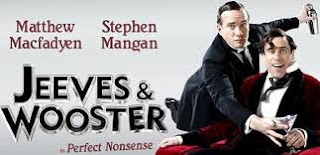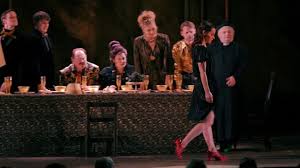Firstly:
Dear All
I am always so embarrassed by your generosity. I love this group, and you give me so much pleasure from your enjoyment of the plays I choose, so thank you so much for not just the very generous gift (which Tim and I will enjoy very much, and I hope that you will enjoy the photos of museums that you are now going to receive all year!), but for your continued participation in and support for the group.
I hope you all have a wonderful festive season, and I'm looking forward to more fun and sometimes challenging plays in 2019.
Love Janet
And so on to 2019!
The Memory of Water is a comedy written by English playwright Shelagh Stephenson, first staged in 1996. It won the 2000 Laurence Olivier Award for Best New Comedy. In 2002 it was turned into a film called Before You Go, starring Julie Walters and Tom Wilkinson. It's a play I've had in mind for some time, but I've finally been nudged into doing it because, in my absence, the ECC read it in November and it was hugely popular. Indeed, it might even be produced by them!
Three sisters; Teresa, Mary and Catherine, come together before their mother's funeral, each haunted by their own demons. The play focuses on how each sister deals with the death and how it directly affects them. The three each have different memories of the same events, causing constant bickering about whose memories are true. As the three women get together after years of separation, all their hidden lies and self-betrayals are about to reach the surface.
A theme of the play is, eponymously, memory. The sisters' memories interact with each other, and show that despite synchronicities of time and place they cannot agree upon one unifying experience. This is echoed in Vi's final speech, which portrays Alzheimer's disease as being adrift among a series of islands of your own identity. The sisters drift around their own islands of memory, unable to agree on one particular point, and yet are unified by their familial bond.
Characters
Vi
Vi is the mother of the three sisters and whose funeral they are together for. She was a glamorous woman when younger, with whom all the men of the village were enamoured. She was possibly not the best of mothers.
Mary
Mary is the middle child. Mary is a doctor whose five-year affair with Mike, a married doctor, is starting to show strain.
Teresa
Teresa she is the eldest sister and an unhappy housewife, who runs a health food supplement store with her husband Frank, and who feels she has had to keep the family together for years.
Catherine
Catherine is the youngest sister, and the only sister who does not have a partner.
Mike
Mike is the doctor with whom Mary has been having a 5-year relationship. He has told Mary that his wife has ME.
Frank
Frank is Teresa's husband and runs the health food supplement store with her. He isn't satisfied by doing a job which he doesn't believe in nor care about.
Shelagh Stephenson
Born in 1995, as well as being a playwright (for both stage and radio) Stephenson has worked as an actress (including work with the RSC as well and various television roles).




























